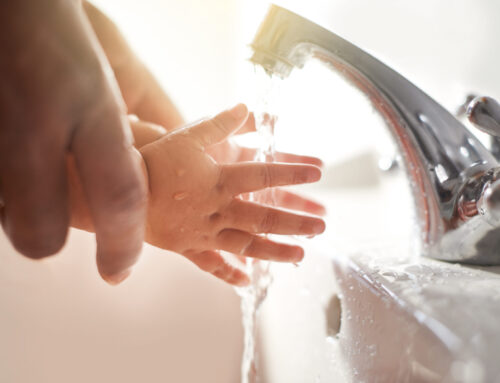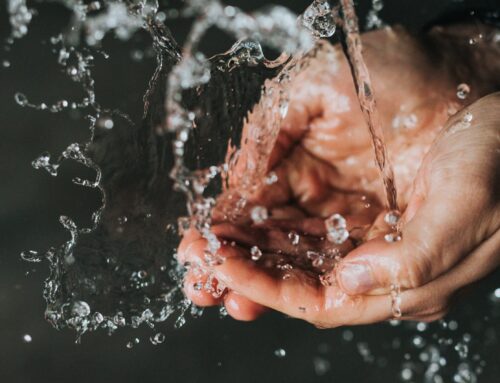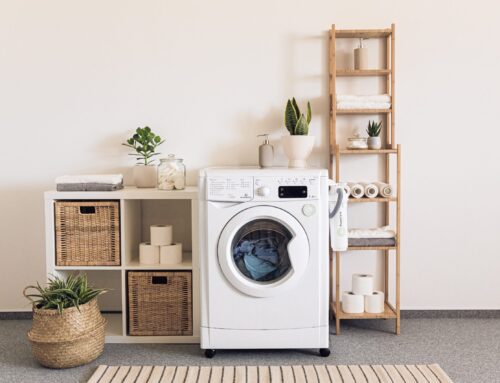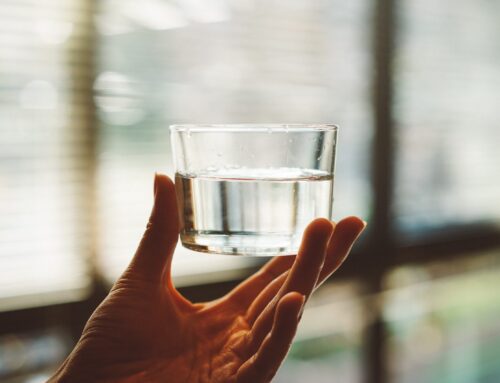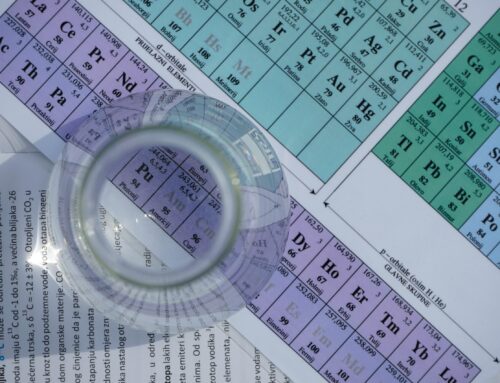
Blue bags, yellow bags, green bags, oh my! What will happen if I choose the wrong one?
Solar Crystals are in the blue bag, Pellets are in the yellow bag, and rust / iron fighting comes in the green bag. But which one to choose?
We hear this question a lot and can understand the confusion with all the brands and varieties out there. Fortunately there are a few simple rules that you can follow to make sure you are choosing the right one and NOT the wrong one.
Rule Number 1: Do not use “Rock Salt”
Rock salt is the mineral form of table salt and can also go by the names “halite” or even “ice melt”. This type of salt might be ok for use on your icy sidewalks but should not be used in your water softener. Rock salt is much less refined and clean than other softener salt options and will create issues due to the extra contaminants.
Rule Number 2: Blue bag, yellow bag, or green bag – any salt is better than no salt at all.
If you are out of salt and not sure which one to choose ( blue bag, yellow bag, or green bag ), you can’t go too wrong choosing either one. There are advantages to each kind, which we go over a bit later. But for now just remember that you can fill an empty brine tank with either of these options and be just fine.
Rule Number 3: Once you choose a bag, stick with it.
After making your decision based on price, brand, or snazzy product marketing message stick with it. This is especially true if you already have a fair amount of salt left in your tank. The reason for sticking with it comes down to consistency of how the salt disolves. Each type of salt ( crystals or pellets ) will provide different dissolve rates when mixed. When mixing two different types of salt can potentially create undesirable conditions such as mushed or hardened salt.
Rule Number 4: If you need to switch then wait until your salt level is low.
If you are looking to switch to a different type of salt like pellets to extra coarse, we are here to tell you that you can. However, wait until your brine/salt tank is very low This will help to limit the difference that occur in desolve rates between the types of salt ( see rule number 3 ).
It is ideal to keep brine/salt tanks 1/4 to 1/2 full of salt. Brine Tanks do not need to be filled to the top with salt. Although it is perfectly fine to fill a softener all the way, it can be hard to break up a “salt bridge” with a full tank if your salt becomes hardened.
Types of salt explained:
Extra Coarse Solar (Blue Bags)
Extra Coarse Solar Salt is one of the two most common recommended types of salt. Although quality can vary from manufacturer, this is an overall clean and acceptable grade of salt for use in any water softener. The biggest benefit of extra coarse solar is the wide-spread availability and it can be the easiest to work with when it comes to breaking up bridges. Because extra coarse solar is not processed, it can leave brown rings or dirty water in your brine tank over extended periods of time, typically years, which is from dust in the salt. If using extra coarse solar, it may not be a bad idea to clean your brine tank every few years.
Pellets (Yellow Bags)
The other most common type of salt. Overall, pellets will be the cleanest grade of salt but can vary from manufacturer. Some brands may integrate additives or cleaners into the pellets to improve the water softener performance. Pellets will typically run higher in price due to the processing of the salt to create the pellet. In some cases, mostly under low water usage or infrequent regeneration scenarios, pellets can lose their structure and become mushed and may not dissolve. They can also dry out and harden. If either of these scenarios are experienced, try switching to Extra Coarse Solar.
Rust / Iron (Green Bags)
Under the trade names such as “Rust Buster” or “Iron Fighter”, the green bags are highly recommended for water with iron or manganese content. Green bags are pellets with an additive, either sodium-bisulfate or citric acid, which will help dissolve and further clean stubborn iron and manganese from the softening resin. Green bags will be on the higher side of salt cost, but absolutely worth it for iron and/or manganese.
Rock Salt
This type of salt is not common, but is the most crude form of salt. It will be very dirty with rocks, dirt, dust, etc. More suitable for driveways than water softeners, rock salt is not recommended in water softeners and should only be considered as a last resort. Clean and remove remaining rock salt from the water softener as soon as an acceptable grade of salt is available.
Block Salt
Salt blocks are known for their use as a wild-life attractant, often referred to as a “salt lick”. Salt blocks are not ideal due to very little surface area of salt exposed to water resulting in weak brine concentrations. If necessary, salt blocks should only be considered in water softeners that are post-fill or can be modified to operate as post-fill (refills the salt tank with water at the end of the regeneration cycle and always keeping water in the salt tank). This will allow for adequate time to dissolve salt.
Salt Additives
Salt is what keeps the water softener removing undesirable mineral from water, much like how gas is what keeps a car running. Some water supplies may be rich in iron and manganese which can foul water softener resin. Salt can clean iron and manganese from the softener resin during regeneration, but using additives to assist in this process is indefinitely beneficial.
Iron Out / Rust Out
These are brand names for the chemical sodium bi-sulfate which is an iron reducing agent and commonly found at department or hardware stores. This is one of the most effective products at restoring iron fouled resin, used continuously to prevent iron fouling of resin and removing iron staining from clothing or fixtures. The biggest downside to powdered sodium bi-sulfate is it is irritating to lungs and eyes and should not be breathed. Read the instructions carefully prior to usage.
Resup / Rescare
These are the most common brand names for diluted phosphoric acid which is also a great resin cleaner. The listed brands utilize a blue dye, which will show up in toilets, glasses, tubs if the softener were to malfunction and not all of the acid was rinsed out during the regeneration process. Because this product is a liquid, it is easier to apply to the water softener with less irritation than a powdered cleaner. These products are most effective when a drip feeder is used allowing the cleaner to continuously clean the softening resin. These products are not commonly found in stores, but any reputable water conditioning professional will carry this.
Citric Acid
Nowhere near as powerful as sodium bi-sulfate or phosphoric acid for iron removal, however, citric acid can be used safely without handling precautions. Citric acid is best suited for usage in water softeners where iron is not present, but extra preventative maintenance is desired. Citric acid can help maximize water softener efficiencies and give a boost to softened water for those desiring “silky soft” water.
Disinfectants
Should odors appear in a brine tank, or a water softener need to be sanitized, unscented and non splash-less liquid household bleach can be used to sanitize a water softener, generally in dosages of 1-2 oz per cubic foot. Proproducts SaniSystem is a very effective and non bleach alternative to sanitizing water softeners, coolers and drinking water filtration systems.
Potassium Chloride (Nature’s Own / K-Life / Salt Alternative)
The water softening process is called Ion-Exchange. It removes the unwanted hard water minerals in exchange for sodium. For water with a hardness of 16 grains, you could expect somewhere around 28 mg of sodium in an 8oz glass. If you wish to avoid the sodium, it is common to leave the kitchen cold water off of the water softener or use a reverse osmosis drinking water purifier to remove the sodium. If neither of these are feasible and you still wish to avoid the sodium, you can use potassium chloride instead of sodium chloride. However, there are some things to consider.
Potassium is approximately 30% less efficient at regenerating a water softener, so account for this in your hardness or salt settings.
With basements or mechanical rooms with temperature swings we have experienced potassium hardening to a consistency of ice or cement that won’t dissolve. This is extremely problematic and can ruin a salt tank. We have found that putting a 2-4” piece of Styrofoam beneath the salt tank can help prevent this.
Currently in the year 2019, a 40lb bag of Potassium Chlorine is running $28.00 in Minnesota versus a 40lb bag of solar salt for $6.00
If it weren’t for the above negatives, Potassium Chloride would be the ideal choice and even considered healthy to drink. But, if water quality is a priority, avoid Potassium Chloride.

